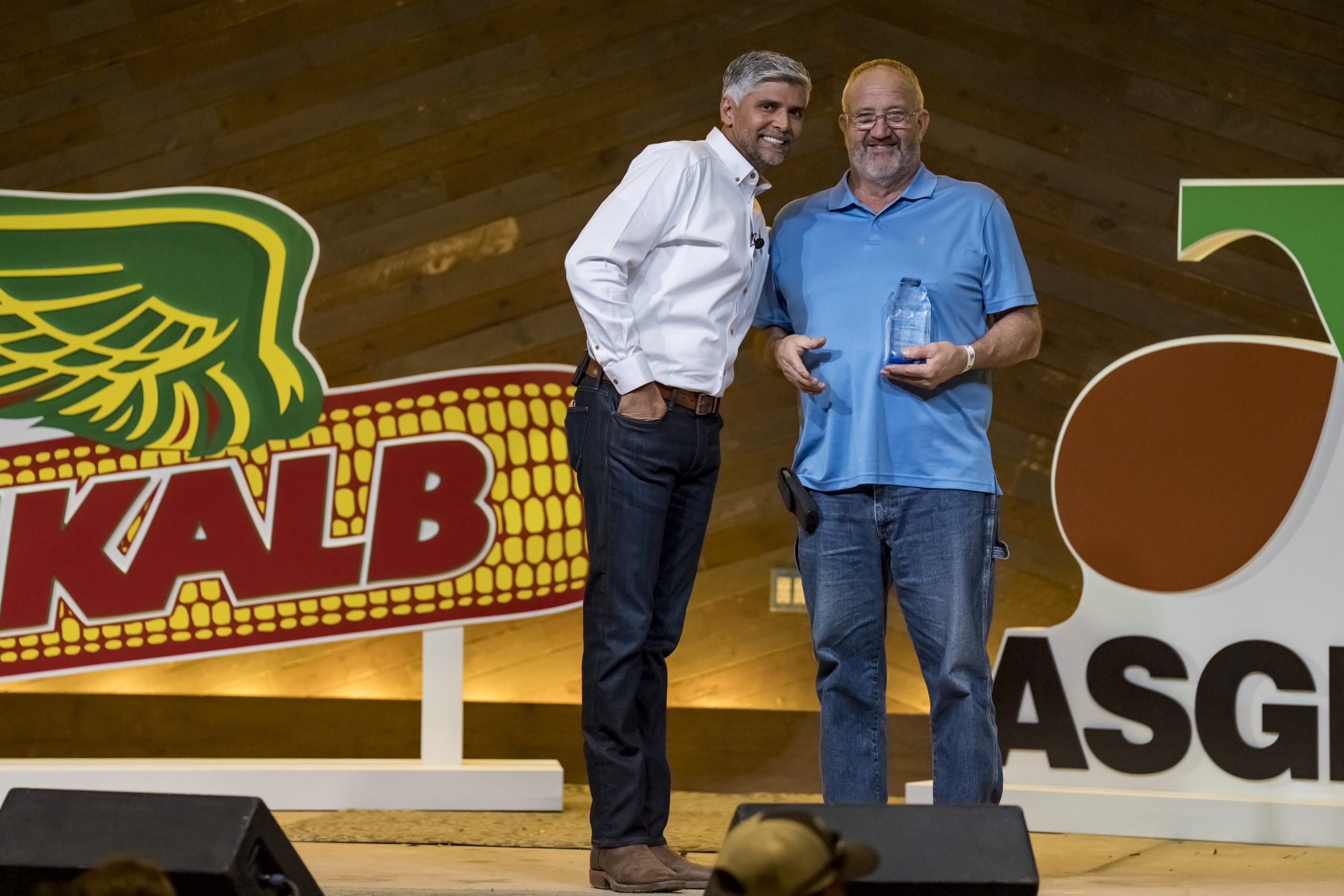A north central Kansas soybean farmer was recently recognized at Commodity Classic for his yield in 2023.
Gregg Sexton, who lives north of Abilene in Dickinson County, grew 96.3 bushels per acre on an irrigated field with Asgrow AG41XF2 seed. He was a top placer in the Asgrow National Yield Contest. The yield came from a 59-acre field. Sexton (at right) was recognized by Asgrow during the Commodity Classic with his 96.3 bushel per acre production. His award was presented by DEKALB Asgrow Brand Lead Dipal Chaudhari in the above photo.
Sexton said the seed selection was a difference maker.
“It’s a good, irrigated variety,” he said. “The plants don’t get as tall. With irrigation, the biggest problem you fight is the plants getting too tall. You can mitigate that to a certain extent by planting a little early or by variety selection.”
Sexton planted his winning field around May 13 and harvested about Oct. 10. Sexton prefers to plant his crop in late April, but he was working on his planter. That delayed getting into the field, but it still was within his planting window.
Growing a quality crop means timely planting so the plants branch out and add more nodes and beans, Sexton said. Also, a healthy canopy helps cut weed pressure.
On his farm, Palmer amaranth is the No. 1 nemesis, and Sexton advocates spraying when the weeds are small and then uses the irrigation waters to build the canopy and shade the ground.
This past year was a trying one, even for irrigators.
Sexton feels fortunate to have irrigation on part of his farm’s crop acreage. Dryland soybeans suffered through a difficult growing season. Growers in his region reported yields of 10 to 20 bushels per acre. Sexton plants his dryland beans after June 10, and those fields did capture some timely rains early in the growing season, but stifling heat later in the year affected the potential. He finished those fields with a yield of about 18 to 22 bushels per acre.
“We were hurt by the drought,” Sexton said about his non-irrigated soybeans. “The first heat wave was not bad, but the second one put the nail in the coffin.”Sexton also raises irrigated corn and dryland wheat and grain sorghum, but it was a difficult year for those crops, too.
“We can have all the potential in the world, and then we have two weeks of hot weather, and it’s all gone,” he said.
Finding ways to boost yields and efficiency is important to Sexton, and that means trying new products that make sense. Sexton said it is important to be open to new ideas. He enjoys working with Asgrow, and the opportunity to go to Commodity Classic was important to network with other growers.
In his irrigated fields, Sexton is seeking ways to grow 100-plus acre soybeans. That takes good seed selection and timing, he said.
“We’ve got to get all the dominoes in a row so that we can take the next leg up,” he said. “It’s a learning curve.”
Sexton has gotten to know producers in other parts of the country that raise 206 bushels per acre, and while he quips that “sets the bar pretty high for us,” he enjoys learning from other growers.
There are a lot of factors in the environment that can limit Kansas production, but he knows neighbors who have raised 110 to 120 bushels per acre of soybeans, Sexton said. However, he is also a realist. “No matter what 10 acres in a field does, it’s the average that pays the bills,” Sexton said.
Dave Bergmeier can be reached at 620-227-1822 or [email protected].
Sign up for HPJ Insights
Our weekly newsletter delivers the latest news straight to your inbox including breaking news, our exclusive columns and much more.




